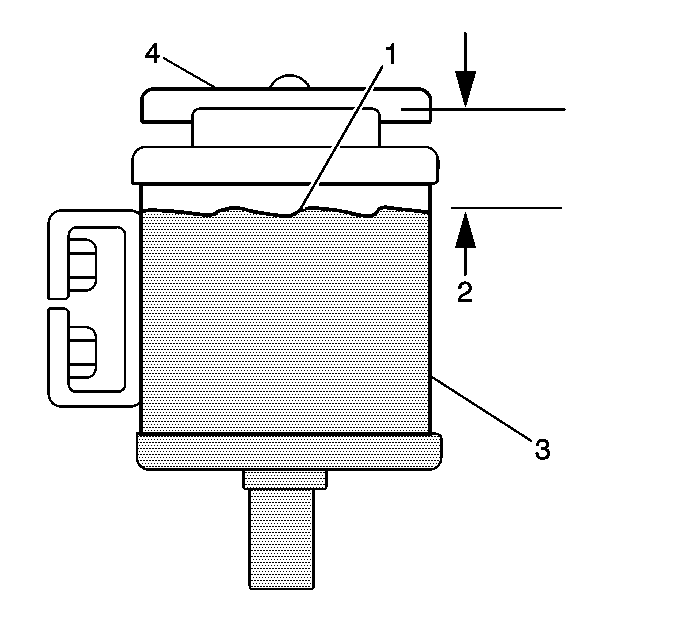
| | Important: Do not run the vehicle if the fluid reservoir is empty.
|
| • | Inspect the fluid level (1) and inspect the fluid condition. |
| • | If the leak is not obvious, thoroughly clean all the suspected
areas before inspecting the system. |
| | The point where fluid is dripping is not necessarily the point where
the system is leaking. Identify the exact point of the leak. |
- Fill the system with the approved power steering fluid. Refer
to
Fluid and Lubricant Recommendations
in Maintenance and Lubrication.
You may need to lay down clean paper beneath the vehicle in order to
clearly spot the area of the leak.
- Perform the following procedures:
| 2.1. | Set the parking brake. |
| 2.3. | If necessary, turn the steering wheel to the right and to the
left. |
| 2.4. | Run the engine for approximately 2 to 3 minutes. |
| 2.5. | Shut the engine off. |
| 2.6. | Inspect and repair the leak if evident. |
- Further inspect the system using the following procedures:
| 3.1. | Inspect the hoses for cuts. |
| 3.2. | Inspect the hoses for loose clamps. |
| 3.3. | Inspect the hoses for loose fittings at the pump. |
| 3.4. | Inspect the hoses for loose fittings at the gear. |
| 3.5. | Inspect the remote fluid reservoir and fittings for loose fittings. |
| 3.6. | Inspect the lines for cuts. |
| 3.7. | Inspect the lines for loose clamps. |
- If the leak continues, perform one of the following procedures:
| • | Repair or replace the necessary parts within the hydraulic lines. |
| • | Remove the power steering pump or steering gear for appropriate
repairs. |

